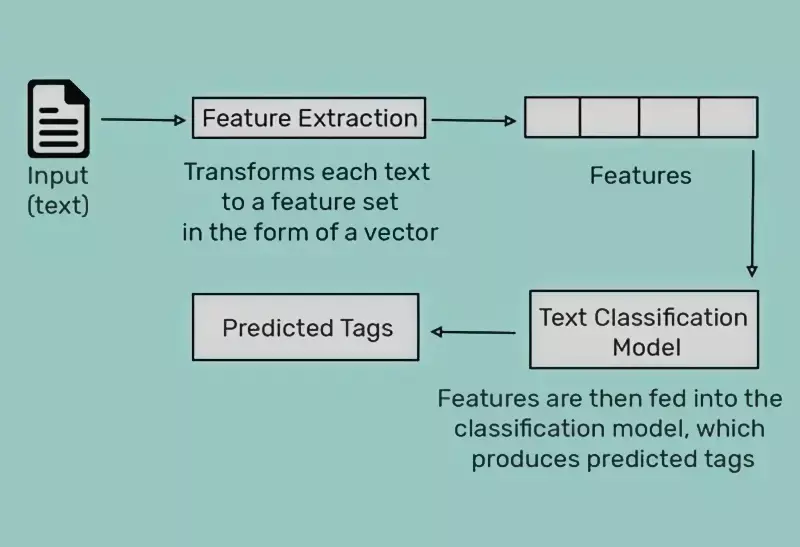AI Text Classification
What is AI text classificiation
AI text classification is a natural language processing (NLP) task where a machine learning model is trained to automatically categorize or label text data into predefined classes or categories. The goal is to assign one or more classes to a given piece of text based on its content. Text classification can be used in various applications such as spam detection, sentiment analysis, topic classification, and language detection.

Where can you find AI text classificiation models
This is the link to use to filter Hunggingface models for text classification:
https://huggingface.co/models?pipeline_tag=text-classification&sort=trending
Our favourite Model Authors:
The most interesting AI text classification project
One of the most interesting AI text classification projects is called Prompt Guard.
LLM-powered applications are susceptible to prompt attacks, which are prompts intentionally designed to subvert the developer’s intended behavior of the LLM. Categories of prompt attacks include prompt injection and jailbreaking:
Prompt Injections are inputs that exploit the concatenation of untrusted data from third parties and users into the context window of a model to get a model to execute unintended instructions.
Jailbreaks are malicious instructions designed to override the safety and security features built into a model.
Prompt Guard is a classifier model trained on a large corpus of attacks, capable of detecting both explicitly malicious prompts as well as data that contains injected inputs. The model is useful as a starting point for identifying and guardrailing against the most risky realistic inputs to LLM-powered applications; for optimal results we recommend developers fine-tune the model on their application-specific data and use cases. We also recommend layering model-based protection with additional protections. Our goal in releasing PromptGuard as an open-source model is to provide an accessible approach developers can take to significantly reduce prompt attack risk while maintaining control over which labels are considered benign or malicious for their application.
Model link:
https://huggingface.co/meta-llama/Prompt-Guard-86M
How AI Text Classification Works
- Input Text: The system takes in a piece of text, such as a sentence, paragraph, or document.
- Preprocessing: The text is typically cleaned and preprocessed (removing punctuation, converting to lowercase, etc.). The text is also tokenized, meaning it is broken down into words or tokens.
- Feature Extraction: The text is transformed into a format that a machine learning algorithm can understand. This usually involves converting text into numerical features, such as word embeddings (e.g., Word2Vec, BERT), TF-IDF (Term Frequency-Inverse Document Frequency), or Bag of Words (BoW).
- Classification Model: A machine learning or deep learning model (such as Logistic Regression, Naive Bayes, Support Vector Machines, or neural networks) is trained on labeled examples of text data to learn how to map text features to categories.
- Prediction: After training, the model can classify new, unseen text by predicting its category based on the learned patterns.
Types of AI Text Classification
- Binary Classification: The text is classified into one of two categories. Example: Classifying emails as "spam" or "not spam".
- Multi-class Classification: The text is classified into one category out of multiple possible categories. Example: Categorizing news articles as "sports", "politics", "entertainment", etc.
- Multi-label Classification: The text can belong to more than one category simultaneously. Example: Tagging a movie review with multiple genres such as "comedy", "romance", "drama".
- Sentiment Classification: A type of classification where the goal is to determine the sentiment (positive, negative, neutral) expressed in the text. Example: Sentiment analysis of product reviews or social media comments.
Common Applications of AI Text Classification
- Spam Detection: Automatically identifying spam emails or messages.
- Sentiment Analysis: Identifying the emotional tone or sentiment in customer reviews or social media posts (e.g., positive, negative, neutral).
- Topic Classification: Automatically tagging articles, blogs, or documents based on their topics (e.g., sports, politics, tech).
- Language Detection: Determining the language of a given piece of text.
- Customer Support: Categorizing customer queries to route them to the right support team.
- Toxic Comment Detection: Identifying and flagging harmful or offensive language in forums or social media platforms.
Key Algorithms Used in Text Classification
- Logistic Regression: Simple and widely used for binary classification tasks.
- Naive Bayes: Based on Bayes' theorem, often used for spam detection.
- Support Vector Machines (SVM): Effective in high-dimensional spaces, often used for text categorization.
- Neural Networks (RNN, LSTM, CNN): Deep learning models that can capture complex patterns in the text.
- Transformer Models (BERT, GPT, etc.): State-of-the-art models that excel at understanding context in text and improving classification accuracy.
Example:
If a company wants to classify customer feedback into categories like "Product Issue", "Service Issue", "Delivery Issue", and "Other", an AI text classification model can be trained on labeled feedback data. Once trained, it can automatically classify new feedback into one of these categories.
How to setup a text classification system
If you are ready to setup your first text classification system follow the instructions in our next page:
How to setup an AI text classification system
Image sources
Figure 1: https://www.cogitotech.com/wp-content/uploads/2022/12/Text-Classification.webp
More information
- AI Text Classification
- What is AI Token classification
- What is Table Question Answering in AI
- What is Question Answering in AI
- What is Zero-Shot Classification in AI
- What is Translation in AI
- What is Text AI Summarization
- What is Feature Extraction in AI
- What is Text Generation in AI
- What is Text2Text Generation in AI
- What is Fill-Mask in AI
- What is Sentence Similarity in AI

